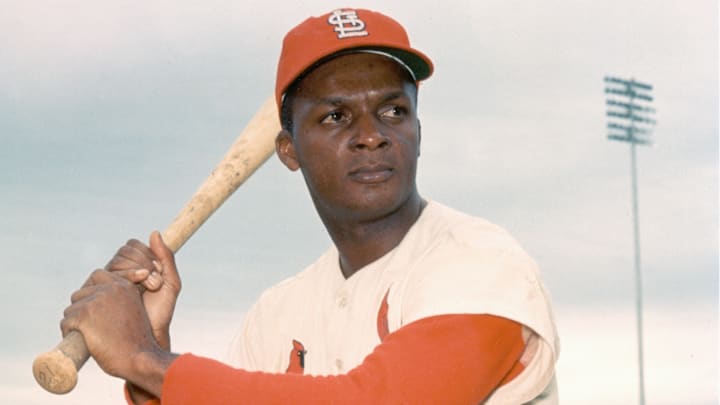The noteworthy swap of legendary Cardinals player Curt Flood for Dick Allen had ramifications that stretched far beyond the diamond. Flood’s refusal to accept his fate led the way to a series of court battles that eventually ended in the Supreme Court. Flood lost his court case, but his fight led to a new agreement between players and owners. This agreement allowed for arbitration, which opened the door to the abolition of the reserve clause.
If you put aside the massive historical significance of the trade, the actual baseball ramifications would have been interesting as well. We know that Flood refused to play, but let’s look at the players involved in the trade prior to the politics that took over.
On October 7th, 1969, Curt Flood, along with catcher Tim McCarver, exceptional reliever Joe Hoerner, and backup outfielder Byron Browne, were sent to the Philadelphia Phillies. In return, the Cardinals received superstar Dick Allen, former all-star 2B Cookie Rojas, and young righty starter Jerry Johnson.
The Cardinals saw an opportunity to get younger and nab a slugger who could supply the power that they so desperately lacked in their lineup. The Phillies were looking to start over after years of an acrimonious relationship with Allen.
Here are the details of the players the Cardinals sent out:
Curt Flood
Going into his age-31 season, Flood had just received his seventh consecutive Gold Glove in centerfield. One of the premier defensive centerfielders of all-time, Flood also contributed with the bat, hitting over .300 six of the previous nine seasons. Curt was a three-time all-star.
Tim McCarver
The trusted backstop for all the Cardinals' 1960s World Series teams, McCarver was a well-rounded catcher. He served in two All-Star Games and finished as the MVP runner-up in 1967.
Joe Hoerner
Over four seasons with the Cardinals, Hoerner averaged a 2.10 ERA out of the bullpen. His time in St. Louis included 19 wins and 59 saves. A vital bullpen arm in the late 60s.
Byron Browne
A St. Joseph, Missouri native, Browne bounced around from the Cubs to Houston to St. Louis. He was a mid-20s reserve outfielder with a bit of pop in his bat and a penchant for high strikeouts.
Here are the details of the players the Cardinals received from Philadelphia:
Dick Allen
At the time of the trade, Allen was only 27 and already a superstar. The former Rookie-of-the-Year winner had already led the league in OBP and Slugging Average in separate seasons. Allen hit 20 or more home runs in six consecutive years, with a high of 40 in 1966. From 1964-1969, Allen had a higher slugging percentage than any player in baseball – higher than Frank Robinson, Hank Aaron, and all the Willies in San Francisco.
Cookie Rojas
Primarily a second baseman in Philadelphia, Rojas seemed poised to be a player on the rise after a .300 season and an All-Star appearance in 1965. The subsequent years saw his offensive abilities sputter, and his batting average declined for each of the four years leading up to the trade.
Jerry Johnson
A young starter who had moderate success in his first two big league seasons, Johnson ended 1969 throwing very well. In his last seven starts with the Phillies, Jerry threw 5 Quality Starts (6 IP with 3 ER or less). One was a shutout of the Braves, and his final appearance was a seven-inning gem against the Miracle Mets.
Despite the haul, all three players would only play one season (or even less) in St. Louis! Allen went on to continue his success by winning an MVP in 1972. Rojas was shipped out to Kansas City, where he played in four All-Star Games. Johnson finished sixth in the NL Cy Young voting in 1971 after transitioning to a closer role with the Giants.
These losses, coupled with the decision to trade Steve Carlton a year later, severely cost the Cardinals' top organizational talent. It’s no wonder the 1970s were a difficult decade for the franchise.
